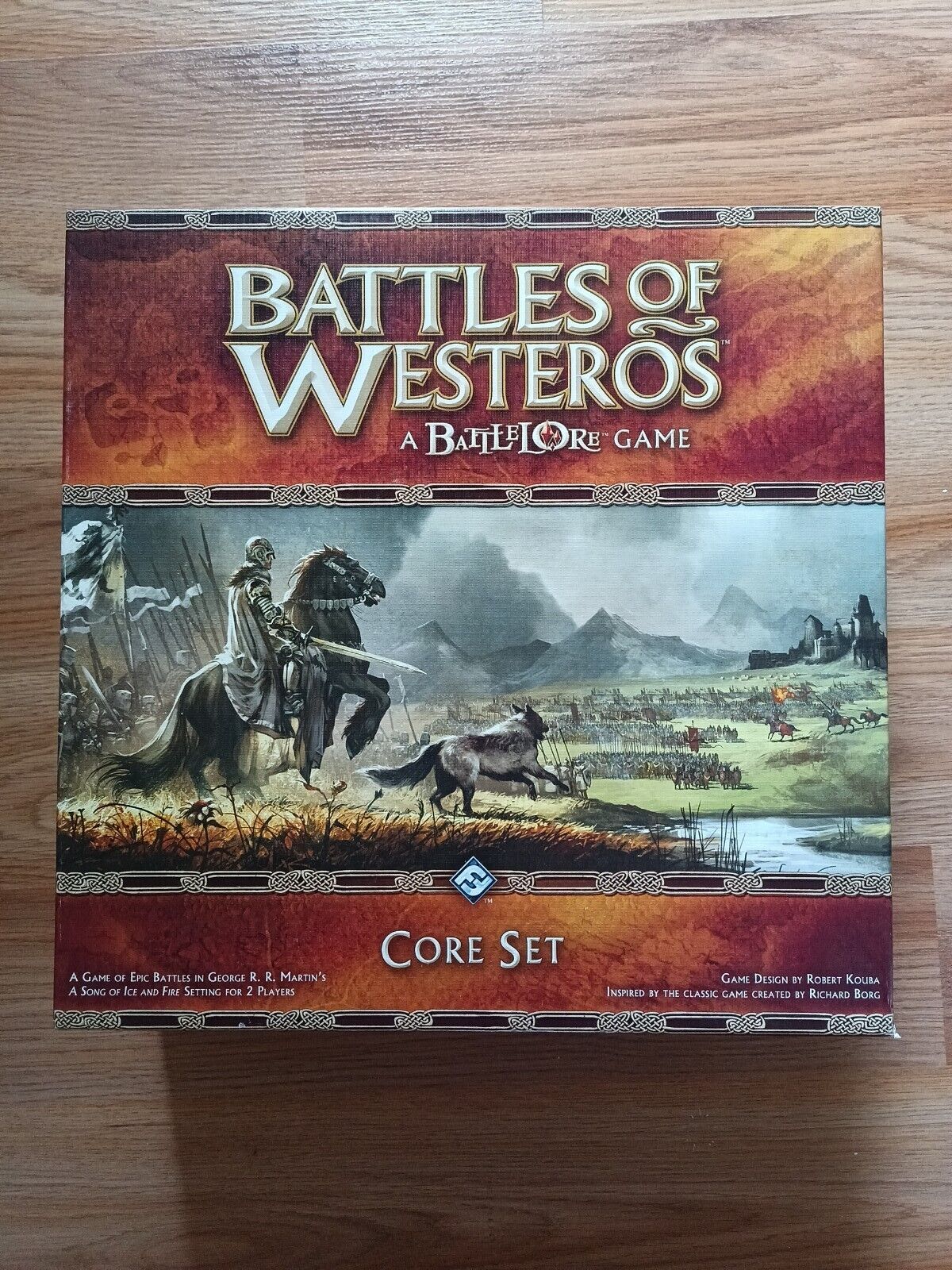Battles of Westeros (2010)
Battles of Westeros
Battles of Westeros is a two-player miniature-based wargame created by Robert A. Kouba and released by Edge Entertainment and Fantasy Flight Games in 2010. It is part of the Commands and Colors series, which is based on a very simple system of playing cards to move units and roll dice to determine the outcome of battles. The game is inspired by the best-selling book series A Song of Ice and Fire by George R.R. Martin.
Why is Battles of Westeros Popular?
Battles of Westeros is popular among fans of the A Song of Ice and Fire book series and the Game of Thrones TV show. It allows players to take part in battles from the series and control either House Stark or their allies to defend their lands against the Lannisters and other enemies. The game is significant because it offers a unique and immersive experience for fans of the series, allowing them to recreate battles from the books and TV show.
Game Components of Battles of Westeros
How To Setup Battles of Westeros
To set up the game, players first prepare their Leadership card decks, each consisting of ten basic cards and five special cards for each commander on the field. The battlefield is laid out with units from both houses, and each unit is identified by its banner. Commanders are placed on the field, and the Morale and round tracks are initialized. Players then draw a starting hand of cards and receive a random assortment of order tokens.
Gameplay Mechanics and Game Objective
Player Experience
Battles of Westeros offers a complex and strategic gameplay experience that deviates significantly from other Command and Colors games. The game requires careful planning and management of commanders, units, and resources. The introduction of new mechanics like the morale system and flanking attacks adds depth and variety to each battle. However, the game’s complexity and numerous rules can make it challenging to teach and learn.
Pros
Cons
Personal Thoughts on Battles of Westeros
Battles of Westeros is ideal for fans of the A Song of Ice and Fire series and those who enjoy deep, strategic wargames. It is not suited for casual gamers due to its complexity and the time required to learn and play. The game’s unique mechanics and high replayability make it a worthwhile investment for those interested in medieval warfare and tactical battles. However, its niche appeal means it may not be as widely played as other games in the Command and Colors series.
We are supported by our audience. When you purchase through links on our site, we may earn an affiliate commission, at no extra cost for you. Learn more.

